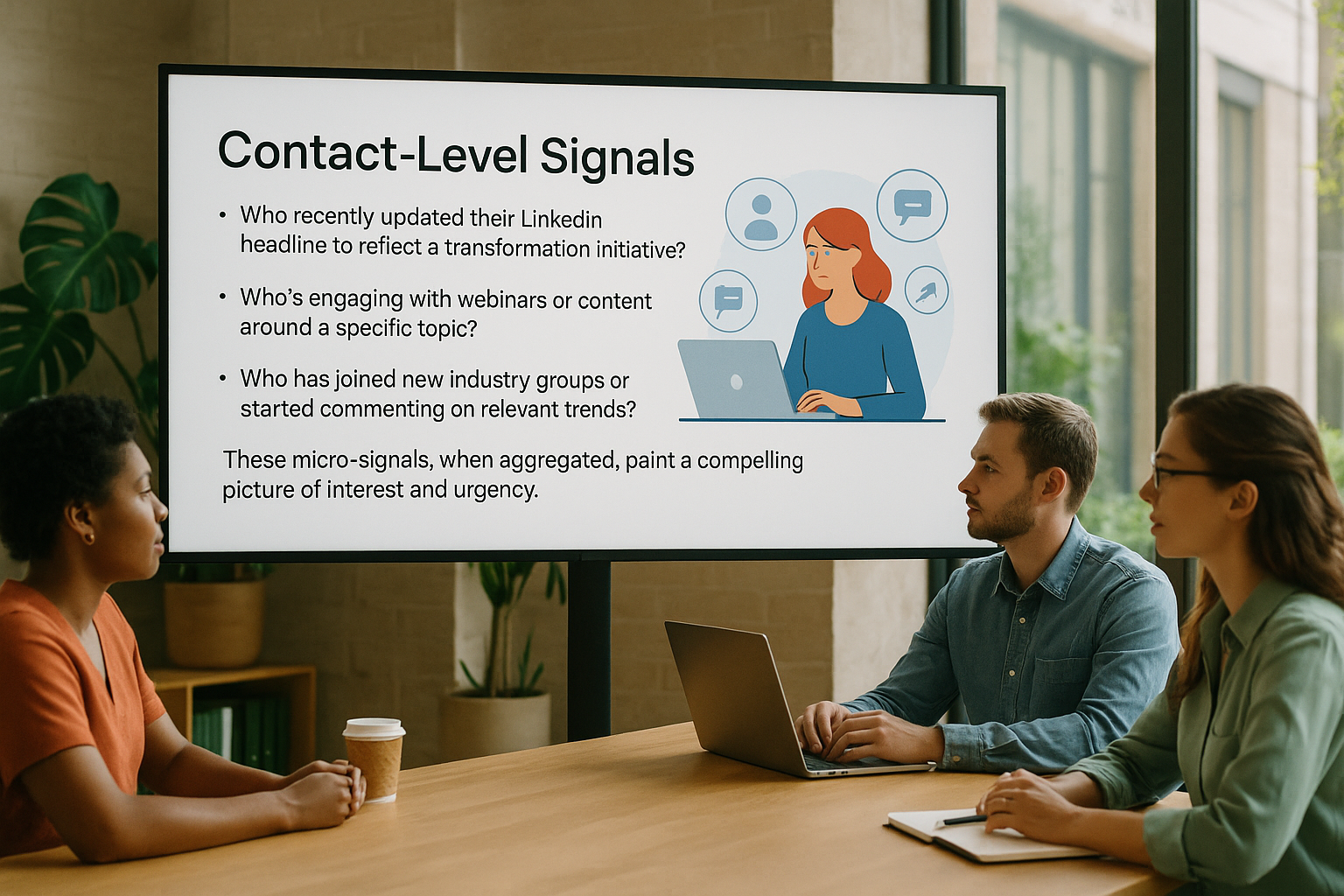Buying Intent Analysis: How to Uncover Which Accounts Are Ready to Move
In the world of strategic B2B sales, timing is everything.
Even the best-crafted message will fall flat if the recipient isn’t ready to buy. That’s why Buying Intent Analysis has become one of the most powerful tools in the modern sales arsenal - helping teams shift from reactive prospecting to proactive, timely engagement.
But while many companies stop at traditional intent data platforms, we go further.
This article breaks down how to leverage intent signals - not just from databases, but from organizational behavior, market activity, and human-level cues - to uncover the accounts that matter most.

What Is Buying Intent Analysis?
At its core, buying intent analysis is about answering a simple question:
Which of my target accounts are actively researching, planning, or preparing to buy a solution like mine - right now?
It involves tracking a wide range of behavioral, organizational, and digital signals that indicate readiness to engage. And when applied properly, it helps sales teams:
Prioritize the most promising accounts
Shorten the sales cycle
Increase conversion rates
Align marketing and sales more closely
How We Analyze Buying Intent - Far Beyond the Basics
Most vendors rely solely on buying intent databases - platforms that track keyword research, content consumption, or page visits.
We believe that’s just the beginning.
Here’s how we go beyond standard data to build a richer picture of buyer readiness:
1. Classic Intent Signals
We of course leverage industry-standard platforms like G2, Bombora, and Apollo, which identify companies researching specific topics (e.g., HR tools, contact center software, conversational AI).
But in today’s environment, intent is multi-dimensional - and companies rarely declare their readiness that easily.


2. Strategic Business Events
We analyze organizational changes that often precede buying activity:
Partnership announcements (e.g., a new HRIS vendor for global rollouts)
M&A activity that triggers system consolidation or expansion
New office openings or market entries
These are non-obvious intent signals that are often more predictive than direct product searches.
3. Hiring Trends
One of the strongest signals of upcoming investment is hiring behavior:
Hiring a Head of People Analytics? HR stack changes are likely
Building out a new Customer Experience team? Tools like Talkdesk or Zendesk may soon be in play
We monitor job boards, hiring volumes, and role types to assess whether an account is ramping up for transformation.


4. Department- Level Growth
Many platforms give company-wide data, but we dive deeper into specific departments:
A 20% growth in the IT security team suggests future investment in threat detection tools
A doubling of Customer Support headcount implies need for automation, training, or contact center software
This lens is especially useful when targeting large, multi-division enterprises, where each department operates with its own tech and priorities.
5. Contact-Level Signals
In enterprise sales, your real leverage often comes from individual behavior:
Who recently updated their LinkedIn headline to reflect a transformation initiative?
Who’s engaging with webinars or content around a specific topic?
Who has joined new industry groups or started commenting on relevant trends?
These micro-signals, when aggregated, paint a compelling picture of interest and urgency.

The Outcome: A Smarter, Sharper Account List
When we combine all these elements, we help our clients:
Cut down bloated target lists to the most relevant 20–30%
Focus outreach on accounts that show readiness now
Improve personalization with context-rich insights
Save sales teams hours of low-yield research
The result? A tighter pipeline, faster meetings, and more predictable conversions.
Trusted by






